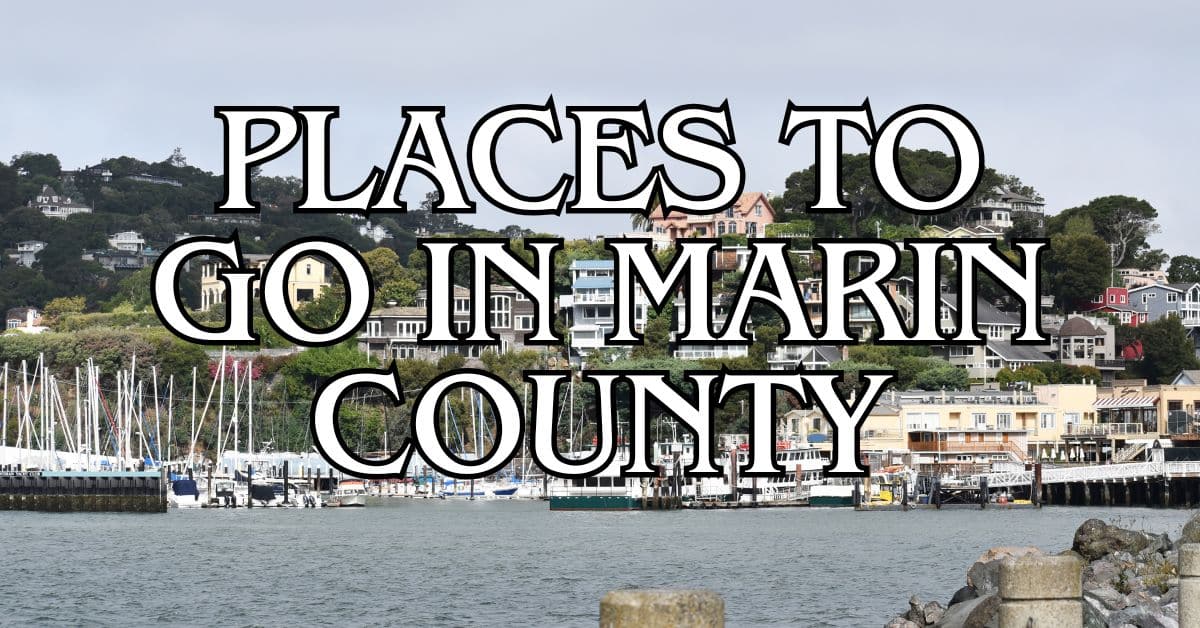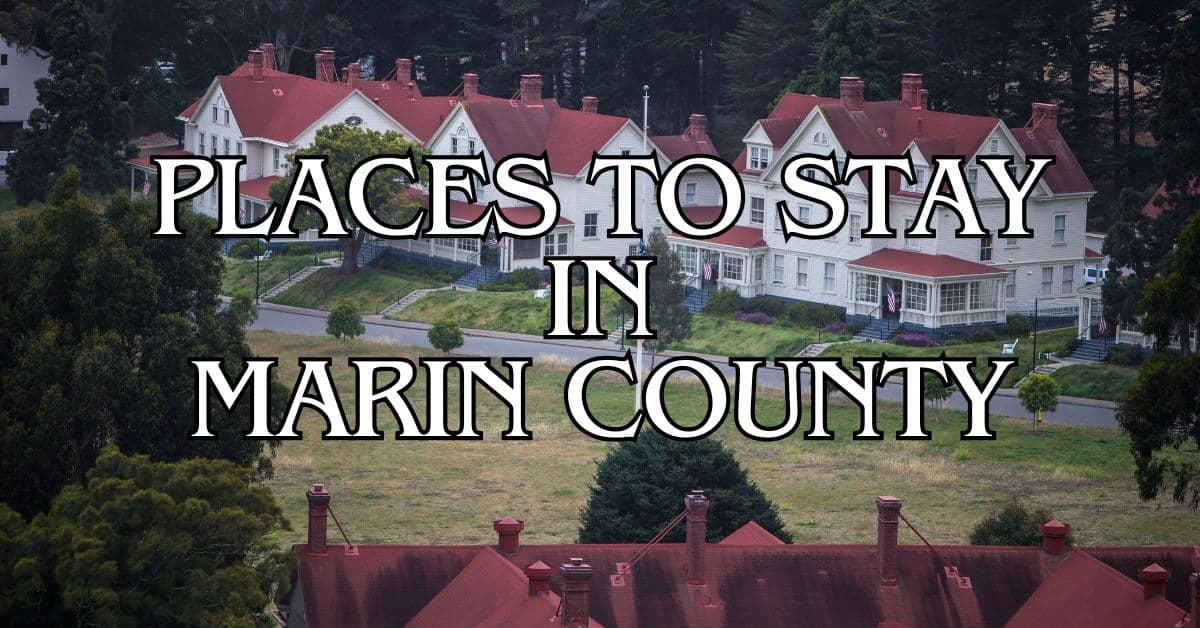Perched at the southern edge of the Golden Gate, Fort Point stands as a silent guardian of San Francisco’s rich history. This old seacoast fort has seen California shift from the Gold Rush boom times to the chaos of World War II, and it gives visitors a mix of historic grit and jaw-dropping views. Fort Point National Historic Site blends military heritage with some of the most spectacular vistas of the Golden Gate Bridge, making it a must-see for anyone exploring San Francisco.
The fort’s location wasn’t a fluke. Built to defend San Francisco Bay after the Gold Rush, its thick brick walls and old cannon mounts are a reminder of a young country pushing west. Today, rangers lead tours through the maze of rooms and levels, sharing what daily life was like for the soldiers who lived and worked here.
Discover hand-picked hotels and vacation homes tailored for every traveler. Skip booking fees and secure your dream stay today with real-time availability!
Browse Accommodations Now
But Fort Point isn’t just a relic. People come for the military history, sure, but plenty just want to snap photos or get a totally different view of the Golden Gate Bridge from right underneath. It’s a rare spot that somehow feels both educational and just plain beautiful, whether you’re a history buff or just someone looking for a cool place to wander.
History of Fort Point
For over 160 years, Fort Point has kept watch at the mouth of San Francisco Bay, playing several military roles as America changed. Those brick walls have seen the Gold Rush, Civil War worries, and even World War II defenses.
Early Origins and Construction
Built between 1853 and 1861 on the southern shore of the Golden Gate strait, Fort Point was part of a coastal defense system meant to protect San Francisco Bay from enemy warships. Its construction happened right as California’s Gold Rush made the bay’s strategic value skyrocket.
Army engineers designed the fort using brick and granite, building it in the style of Third System military architecture. The place was meant to hold up to 126 cannons along its walls—pretty ambitious for the time.
Building it wasn’t exactly a breeze. Workers had to cut down a 90-foot cliff just to get a flat spot only 15 feet above the water. That must’ve been a headache.
Civil War Significance
When the Civil War broke out in 1861, Fort Point had just wrapped up construction. The Army quickly outfitted it with cannons, ready to defend San Francisco from any Confederate ships that might appear. No enemy ships ever made it this far, but the fort stayed on high alert throughout the war.
Union troops lived in the fort’s barracks, drilling with artillery and guarding the bay’s entrance. Its location made it a key part of Union defense plans out west.
After the Civil War, the Army kept Fort Point running but slowly shifted focus as newer, better defenses popped up around the bay. By the 1880s, the fort’s military glory days were fading.
World War II Military Role
World War II put Fort Point back in the game. After Pearl Harbor in 1941, the Army reactivated the site for harbor defense, prepping for possible attacks from Japan.
Soldiers set up anti-aircraft guns and searchlights, and new temporary barracks went up to house the crews. The old fort building became a hub for offices and storage.
The historic brick structure now sat right under the fresh Golden Gate Bridge, which actually helped hide it from above. Engineers even put up protective netting around the bridge and fort to guard against submarine threats.
After 1945, the Army gradually packed up and left. By 1947, nearly all military gear was gone, ending Fort Point’s long run as an active installation.
Fort Point and the Golden Gate Bridge
Fort Point’s story is tied up with the Golden Gate Bridge—a mashup of historic preservation and modern engineering. The fort nearly got demolished during the bridge’s construction, but somehow it survived, so now you’ve got 19th-century brickwork right under that iconic 20th-century span.
Relationship With the Golden Gate Bridge
When the Golden Gate Bridge was built in 1937, the original plan called for tearing down Fort Point to make room for the bridge’s southern anchorage. Thankfully, chief engineer Joseph Strauss realized the fort mattered and changed his plans to save it.
He added an arch over Fort Point, letting the bridge cross the strait while protecting the old fort below. That move kept a big chunk of San Francisco’s military past alive.
These days, you can check out both landmarks together. The fort gives you a wild view of the bridge from below, and the bridge itself is a stunning backdrop for the old fort.
Engineering and Preservation Efforts
Saving Fort Point wasn’t simple. Engineers had to tweak the bridge’s plans, adding a special arch—220 feet wide and 125 feet high—just for the fort.
Now, Fort Point runs as a National Historic Site inside the Presidio, managed by the National Park Service. Preservation crews are always working to keep the fort’s brickwork solid and its connection to the bridge intact.
You can reach Fort Point by walking paths from the Golden Gate Bridge Plaza down to Battery East. There are exhibits and programs about the fort’s military past and its odd relationship with the bridge.
The fort’s spot gives you some of the most dramatic views of the bridge’s southern end and the swirling waters below.
Visiting Fort Point in San Francisco
Visiting Fort Point means you get to wander a Civil War-era brick fort and take in epic views of the Golden Gate Bridge. Tucked right under the bridge’s southern tip, it’s a blend of military history and some of the city’s best scenery.
Visitor Information and Hours
Fort Point National Historic Site opens Friday through Monday from 10:00 AM to 5:00 PM. Entry is free, which is a nice change in a city that can get pricey fast.
The fort has three tiers of brick arches and plenty of nooks to explore. Rangers often lead tours, sharing stories about the fort’s role in guarding the bay during the Civil War. The details about construction and daily life are surprisingly fascinating.
Throughout the year, you’ll find cannon demonstrations and candlelight tours at night, which give the place a whole different vibe. Some of these events need reservations or tickets, so it’s smart to check the National Park Service website before you go.
Free Parking and Accessibility
There’s a free parking lot near the fort entrance, but spots go fast on weekends, holidays, or sunny days when everyone wants that bridge selfie.
If you’re coming by public transit, the PresidiGo shuttle links Fort Point to downtown and other Presidio spots. Biking is also a solid option, with scenic routes leading right to the fort.
The main level is wheelchair accessible, but upper floors are only reachable by stairs. The National Park Service offers video tours and photo displays for visitors who can’t make it upstairs.
Photography and Scenic Views
Photographers love Fort Point—it’s one of the best places in the city to get dramatic shots. Standing under the bridge, you can frame the massive support towers against the sky, or catch the light glinting off the bay.
From the roof, you’ll get sweeping views of the bay, Alcatraz, Angel Island, and the Marin Headlands. The 360-degree perspective is a treat, especially for anyone with a camera.
Morning light is usually best, but afternoon fog can add some moody atmosphere. Winter and spring often mean clearer days. Inside, the brick arches and spiral staircases make for cool architectural photos, if that’s your thing.
When storms roll in, waves crash against the fort’s seawall—a wild reminder of why they built this place right here in the first place.
Architectural Features and Points of Interest
Fort Point shows off some serious 1800s military architecture. Its design is all about defense, but there’s a surprising amount of craftsmanship that’s survived over 150 years of rough weather.
Structure and Barracks
The fort’s walls are seven feet thick and laid out in classic Third System style. There are three tiers of casemates (vaulted rooms) that once held heavy artillery pointed straight at the Golden Gate.
Inside, the fort is split into sections for different uses. Soldiers lived in barracks that could pack in up to 500 men, with separate rooms for officers. It wasn’t fancy, but it got the job done.
The parade ground is an open courtyard ringed by the fort’s brick walls—a space for drills and gatherings.
Some of the coolest details are the spiral staircases, arched ceilings, and heavy iron shutters that could seal off gun positions during battle.
Fort Point Light
The Fort Point Light has been guiding ships through the Golden Gate since the 1860s. The original lighthouse was up on the roof but had to go when they built the bridge.
Now, there’s a smaller automated beacon from 1864 still doing its job. It’s a key navigation aid for ships entering the bay.
The light sits in a prime spot, visible to vessels coming in from the Pacific. Its beam reaches several miles, helping captains steer clear of rocks and tricky currents.
You can check out the lighthouse gear during tours. It’s a nice reminder that Fort Point has served both military and civilian needs over the years.
Fort Point Within the Golden Gate National Recreation Area
Fort Point holds a special spot in the Golden Gate National Recreation Area as one of its most historic sites. The brickwork stands as a testament to military history, and the views of the bridge above are just unbeatable.
Role in the Golden Gate National Recreation Area
Fort Point is a standout historic attraction in the Golden Gate National Recreation Area (GGNRA). This Civil War-era brick fort sits right under the southern end of the Golden Gate Bridge, giving visitors a rare look at the bridge’s underbelly.
The fort’s story spans from the Gold Rush to World War II. Its preservation is proof that the GGNRA values both historic and natural treasures. You can wander through its levels, check out the old cannon spots, and see the lighthouse too.
Throughout the year, cannon drills and candlelight tours bring the fort’s history to life. These events connect people to San Francisco’s military roots, all while soaking in that dramatic setting.
Partnership With the National Park Service
The National Park Service runs Fort Point as a National Historic Site within the Golden Gate National Recreation Area. Thanks to this partnership, the fort stays preserved and open to visitors—kind of the best of both worlds, honestly.
Park rangers give tours that dig into the fort’s construction and military past. On these tours, you’ll hear how Fort Point was once seen as the linchpin for defending the Pacific Coast. It’s wild to think how much depended on this one spot.
The National Park Service teams up with the Golden Gate National Parks Conservancy to keep the site in shape and roll out educational programs. Together, they’ve funded restoration work and dreamed up some pretty creative ways for people to experience the place.
They also back research into Fort Point’s place in local history. Their work has pieced together the fort’s journey from the Spanish-era Castillo de San Joaquín to the Civil War stronghold you see today.
Fort Point in Stockton Springs, Maine
Fort Point State Park sits on a peninsula in Stockton Springs, Maine, and gives visitors 120 acres of coastal beauty with sweeping views of the Penobscot River and bay. The park blends natural scenery with real historical weight, so it’s definitely worth a stop if you’re roaming Maine’s coast.
Historical Overview of Fort Point, Maine
Fort Point got its name from Fort Pownall, which dates back to 1759 and the French and Indian War. Governor Thomas Pownall of Massachusetts ordered its construction to shore up British control along the Penobscot River. Not much of the old fort is left now—just traces, really—but you’ll find signs that tell the story.
In 1974, the area officially became a state park, saving both its history and its wild spaces for everyone. Those 120 acres include over a mile of rocky shoreline, so you can really soak up Maine’s rugged coast.
Because of its location, the peninsula played a big part in early American history. It served as a military outpost and later helped guide ships navigating the area. It’s one of those places where you can almost feel the stories under your feet.
Fort Point Light and Local Attractions
Fort Point Light is probably the park’s most recognizable landmark. Built back in 1836 and then rebuilt in 1857, this lighthouse still helps guide boats along the Penobscot River. These days, the keeper’s house turns into a museum during the summer—worth a peek if you’re curious about local history.
But there’s more here than just the lighthouse. Folks come for all sorts of reasons:
- Hiking trails that twist through all kinds of terrain and ecosystems
- Waterfront picnic spots with surprisingly great views
- Fishing along the rocky shoreline, if that’s your thing
- Wildlife watching in habitats that feel a bit wilder than you’d expect
When the tide’s low, a tidal sandbar shows up—perfect for poking around and seeing what you can find. The protected environment means plants and animals really thrive here, so it’s a solid pick for anyone into nature photography (or just looking for a good walk).
The entrance fee won’t break the bank, and honestly, the park doesn’t get the crowds you’ll find at Maine’s bigger coastal spots. If you’re after a peaceful retreat, this place is a bit of a hidden gem.
Find available hotels and vacation homes instantly. No fees, best rates guaranteed!
Check Availability Now






